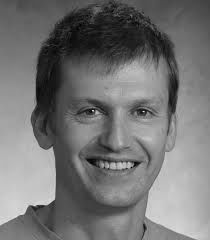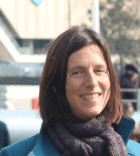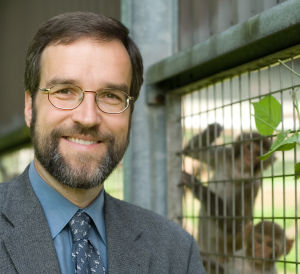| 08:45-09:00 | Opening remarks | | | | | |
| 09:00-10:00 | Keynote lecture: Nicolas Brunel
Fixed point attractors, chaos and sequences in networks with unsupervised Hebbian plasticity rules | | Keynote lecture: Stefan Treue
The neurophysiology of visual attention - quantitative approaches to the shaping of sensation into perception | | Keynote lecture:
Eva Löcherbach
Short term plasticity and short term memory in systems of spiking neurons | |
| 10:00-10:30 | Plenary talk:
Carino Curto
Dynamically relevant motifs in inhibition-dominated networks | | Plenary talk:
Rachel Nicks
Clusters in nonsmooth oscillator networks | | Plenary talk:
Diego Vidaurre
Characterising the temporal dynamics of stimulus processing through unconstrained decoding | |
| 10:30-11:00 | Coffee break | | Coffee break | | Coffee break | |
| 11:00-11:20 | Emilie Soret: Asymptotic behaviour of a network of neurons with random linear interactions
| Andre Longtin:
Data-driven estimation of drift-diffusion-jump neural processes. | Yoram Baram:
Circuit Polarity Effect of Cortical Connectivity, Activity and Memory
| Skirmantas Janusonis: Quantitative Analysis of Stochastic Axon Systems | Angelo Di Garbo: Firing properties of a resonate-and-fire neural model with periodic forcing and noise
| Mustafa Zeki: Communication Between Time Cells Leads to the Linear Increase of Noise |
| 11:25-11:45 | Romain Veltz: Dynamics of a mean field limit of interacting 2D nonlinear stochastic spiking neurons | Antoni Guillamon:
A computational strategy to estimate synaptic conductances in spiking regimes | Pake Melland:
Using dynamic neural fields to examine loci of plasticity in supervised and unsupervised auditory category learning. | Victor Matveev:
Accuracy of Mass-Action vs Stochastic Modeling of Calcium-Dependent Vesicle Release | Bastian Pietras:
Neuronal firing rate models with electrical and chemical synapses | Gemma Huguet: Mathematical tools for phase control and their role in neural communication |
| 11:50-12:10 | Samuel Muscinelli:
Shaping chaotic dynamics and signal transmission by single neuron properties in random neural networks | Ryota Kobayashi:
A method for estimating synaptic connections from parallel spike trains | Tatyana Turova:
Percolation on dynamical random graphs provides a model for defining synaptic connections | Nataliya Kraynyukova:
The impact of mRNA localization on dendritic protein distribution and its dynamics | Anca Radulescu: Predicting dynamics from hardwiring in canonical low-dimensional coupled networks | Zachary Kilpatrick:
Analyzing dynamic decision models using differential Chapman-Kolmogorov equations |
| 12:15-12:35 | Tilo Schwalger: Hazard rate approach to spiking neural networks with background noise | Laura Sacerdote:
Copulas and shuffles as statistical tools to recognize hidden dependences between neurons stimulated by periodic signals | Leonid Rubchinsky: Spike-timing-dependent plasticity effect on the patterns of neural synchrony | Massimiliano Tamborrino:
Shot Noise, diffusion limits and suitable approximations | Aine Byrne:
A neural circuit model for learning a beat | Rune Berg:
Sparse network connectivity revealed from physiology: What pairwise intracellular recordings can tell us about motor circuits |
| 12:35-14:00 | Lunch | | Lunch
Group photo at 13:45 | | Lunch | |
| 14:00-14:20 | James MacLaurin: Wandering bumps in a stochastic neural field: a variational approach | Lubomir Kostal:
Coordinate invariance as a constraint on the mutual information decomposition | Poster session | | Poster prize | |
| 14:25-14:45 | Daniele Avitabile:
This is not a bump | Kresimir Joric: Optimal evidence accumulation on social networks | Poster session | | Fabian Pallasdies:
Synfire Chain-Like Activity Underlies Swimming and Turning of the Scyphozoan Jellyfish Aurelia aurita | Claudius Gros:
The mathematics of self-organized neurobots |
| 14:50-15:10 | Priscilla Greenwood: Stochastic neural field with smoothed noise | Roberto Barrio:
Insect movement gaits: neuron model, CPG and pattern bifurcations | Poster session | | Matias Calderini:
Slow coordinated fluctuations in neural activity in a balanced cortical network | Manu Kalia:
A biophysical model for the tripartite synapse under metabolic stress |
| 15:15-15:35 | Stephen Coombes:
Pattern formation in biological neural networks with rebound currents | Antonio E Teruel: Annihilation phenomenon in a PWL version of the FitzHugh-Nagumo system | Poster session | | Selma Souihel:
Anticipation in the retina and the primary visual cortex : towards an integrated retino-cortical model for motion processing | Oleg Maslennikov:
Collective dynamics in complex networks of discrete-time model neurons |
| 15:35-16:00 | Coffee break | | Coffee break | | Coffee break | |
| 16:00-16:30 | Plenary talk:
Anton M. Unakafov
Strategies used by humans and monkeys in transparent coordination games | | Plenary talk:
Katie Morrison
Emergent sequences from recurrent network motifs | | Plenary talk: Kenneth Harris
High-dimensional geometry of population responses in visual cortex | |
| 16:30-17:00 | Plenary talk: Guillaume Lajoie
Learning to control muscles with a brain-computer interface: a hierarchical and adaptive algorithm to optimally explore neural maps | | Plenary talk:
Peter Thomas
Dissecting Molecular Contributions to Interspike Interval Variability in Conductance-Based Neural Models via Stochastic Shielding
| | Plenary talk:
James Rankin
Periodic forcing of auditory bistability: modelling and experiments | |
| 17:00-19:00 | Welcome reception | | | | Closing remarks
| |
| 18:00-22:00 | | | Conference dinner at Nørrebro Bryghus | | | |


